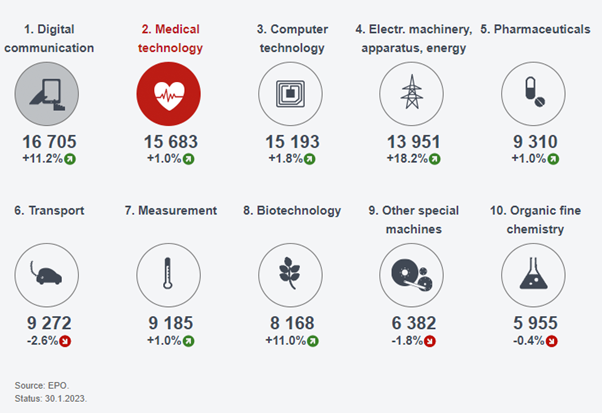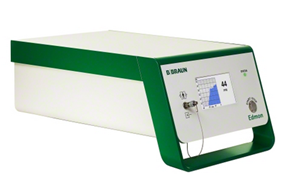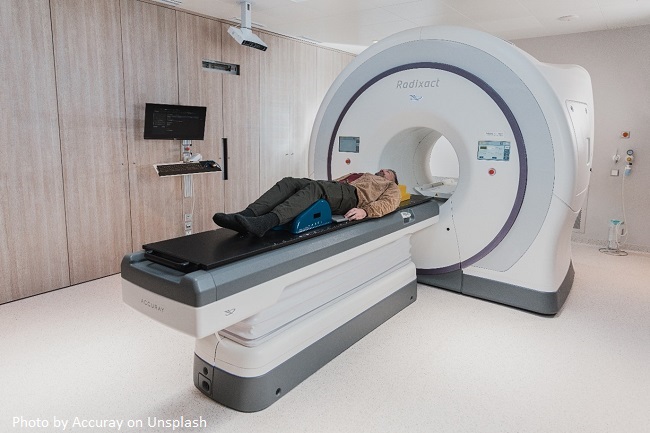IP Strategies in the digital transformation in the world of medical technology: From manufacturers to service providers
The global healthcare market is growing by 6% per annum. An increasing number of people spend increasing amounts of money on their health. Population growth and rising per capita spending mean that the healthcare industry is developing faster than other sectors. The steady development of the key drivers of this growth is going to continue: GDP and purchasing power, ageing, and technological progress. The global market volume is expected to reach USD 20 trillion by 2030.
Technical progress in terms of process improvements, newly discovered drugs, bio-technological active ingredients, diagnostics and MedTech processes leads to contrasting effects: on the one hand, it enables us to cure previously incurable diseases (e.g. some forms of cancer). These desirable effects lead to additional treatment costs and generally also to an extended use of the healthcare system. On the other hand, there are learning curves like in any other industry: shorter occupancy of hospital beds, process cost savings due to e-health and discovery of new treatment methods. The bottom line is that costs are rising due to technical progress, because the additional treatment costs outweigh the benefits gained from efficiency improvements. Especially in the wealthy countries, technological progress in the medical sector continues to be one of the main reasons why healthcare markets grow faster than GDP. This is indicative of a social preference, because societies have always chosen to devote a large proportion of their wealth to prolonging and improving life in the past.

Source: EPO Patent Index 2022
The figure above shows the number of European patent applications filed with the EPO for the ten technology fields with the largest number of applications in 2022. In 2022, these top ten fields represented almost 57% of the total number of European applications filed.
Medical technology is a driver of innovation. The number of submitted patent applications illustrates the innovation efforts and dynamics of the MedTech industry. With over 15,000 patent applications, medical technology is second in the list of technological fields at the European Patent Office.
The real life case – IP Management
 B. Braun Melsungen AG is an international supplier to the healthcare sector providing products and services for hospitals, physicians in private practices, the home care sector, and extracorporeal blood treatment. The company employs some 64,000 members of staff in 64 countries, generates sales of almost EUR 8.5 billion (2022), and is owner-operated. The headquarters are in Melsungen, North Hesse, and the CEO is Anna Maria Braun.
B. Braun Melsungen AG is an international supplier to the healthcare sector providing products and services for hospitals, physicians in private practices, the home care sector, and extracorporeal blood treatment. The company employs some 64,000 members of staff in 64 countries, generates sales of almost EUR 8.5 billion (2022), and is owner-operated. The headquarters are in Melsungen, North Hesse, and the CEO is Anna Maria Braun.
Today, B. Braun is one of the world’s leading suppliers of solutions for the healthcare market, providing users and patients with products and product systems for anesthesia, intensive care, cardiology, extracorporeal blood treatment, and surgery. In total, the product portfolio comprises 5,000 products and 120,000 line items, 95 percent of which are manufactured in-house. Supplementary services and consulting offers make B. Braun a system provider. With its products and services, the company contributes to optimizing workflows in hospitals and medical practices, and to improving safety for patients, doctors, and nursing staff.
To address the various future fields of activity and challenges posed by digitization in IP management, B. Braun has developed an AIPM (active IP management) initiative, ready to be implemented. Intellectual property management is a collective term for strategic and operational activities, as well as management tasks that are part of the commercially oriented handling of intellectual property (IP). At B. Braun, IP management is understood as holistic and integrated management based on the systematic planning, management, and monitoring of intangible benefit potentials. The overall goal is to systematically build success by optimizing the appropriation of returns on innovation.
Case study Magnetic resonance imaging (MRI)
 Magnetic resonance imaging (MRI) is a medical imaging technique that is able to create images of organs such as the brain, heart, liver arteries and more. MRI is widely used in hospitals and clinics because it is able to generate compared to other techniques better contrast images of soft-tissues.
Magnetic resonance imaging (MRI) is a medical imaging technique that is able to create images of organs such as the brain, heart, liver arteries and more. MRI is widely used in hospitals and clinics because it is able to generate compared to other techniques better contrast images of soft-tissues.
The high demand of MRI scans in hospitals can be satisfied by MedTech companies in various ways and with different business models. Two examples are the transaction-based business model and the “as a service” business model.
In the transaction-based business model the MRI device is directly bought by the hospital or clinic. This means, that there are only one-time interactions between the hospital and the MRI manufacturer. To create more sales and with it income the manufacturer therefore constantly needs to search for new hospitals that buy new products. In this business model the main customer group are big healthcare providers with big budgets, who operate the devices 24/7. They can afford to buy a premium device, which outperforms the competition. For the IP strategy follows, that the manufacturer wants to protect the critical features to generate more sales with premium prices. An example patent is: EP3404436B1
In the “as a service” business model the MRI device and additional service software are not bought by the hospital, but the hospital pays subscription fees for the use of the MRI and the subscribed services. The manufacturer still owns the physical system and can offer additional services, like maintenance or updates of the system. The target group in this business model are healthcare providers with smaller budgets, e.g. radiology practices, which cannot invest in buying a new device, but can afford the monthly fee. The aim of the IP strategy is to protect the service infrastructure, e.g. for monitoring and performance features, to create a lasting relationship with the customer by lock-in-effects. An example patent is: EP3066596B1
Questions:
1 . Please explain how the digital transformation changes the business model of MedTech companies from manufacturing companies to service providers based on B. Braun.
2 . Please explain which generic IP strategies are applied in the transaction-based business model and “as a service” business model for MRI manufacturers and search for each strategy for a patent which support the strategy?
3 . Please describe a use case for an additional digital service, which could be offered by MRI producers to hospitals or doctors. Please develop for this use case an IP strategy and identify a patent, trademark and design right, which supports the developed strategy.
Case study presentations:
Group A:
The presenting students are: Ewan Van Minnebruggen, Thanh Thuy Nguyen, Grégory Robin, Elisa Buoso, John Titan, Hans-Jörg Schaller
Group B:
The presenting students are: Marlo Sedlmair, Jacob Watfa, Luca Pusterla, Vincent Boittiaux, Mariana Zaichuk
Group C:
The presenting students are: Veravej Guy Ornthanalai, Hoa Binh Nguyen, Victor Lisovenko, Nina Petkovska, Anne-Raphaelle Aubry, Larry Bond
Group D:
The presenting students are: Ana Claudia Machado Rebelo Marques, Wee Kiat Chai, Faten Sadaka, Lionel Sebastien Parisot, Melis Ezgi Engin, Thorsten Dierkes
Do you want to dig deeper into this topic and gain practical knowledge? Have a look at our case study: The role of IP in the digital transformation of the MedTech industry: Case study B. Braun – IP Business Academy



